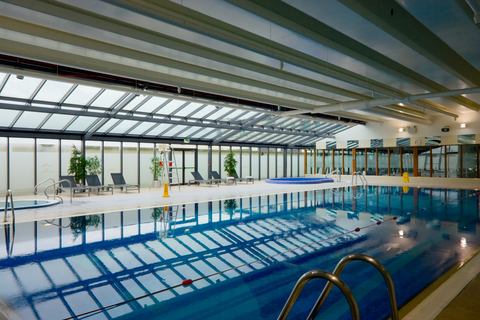Professional Watershaping
'It's a fact of life,' declared David Tisherman in opening his Details column 15 years ago this month: 'The best design feature in the world isn't worth anything if it isn't executed properly. And no matter how good your in-house staff or subcontractors are, they need guidance when it comes to the nuts-and-bolts work of getting the job done the way its designer intends.' '[W]hen you have good, tight supervision provided by a knowledgeable overseer working with good crews and a good set of plans, anything
With any facility more than a few years old, it's easy to help watershape managers and operators find ways to save money. All it takes, writes Mike Fowler, is some inside knowledge and a laptop computer equipped with cost-calculating software.
'Science tells us that the human eye can see about seven million colors and that our minds instinctively perceive depth and dimension. This visual capacity,' noted Stephanie Rose at the outset of her Natural Companions column in April 2006, 'enables most of us to move around without bumping into things, some of us to swing at and somehow hit a golf ball and, in the case of a beautiful garden (we can hope), all of us sense
This is a story about possibilities pulled within reach by modern technology. It all started early in 2015, when one of us talked with a friend about the benefits of belonging to a group of like-minded professionals who get together a couple times a year to talk shop, exchange ideas and generally build the kind of camaraderie that's hard to develop if all you do is
'During the past few years,' wrote Brian Van Bower to open his Aqua Culture column in March 2001, 'I've come to the stark realization that there are too few quality craftspeople in most geographical areas of our country. And it's not just the watershaping trades: The same holds true for most areas of the greater construction industry as well.' 'The hard reality is that, for many people in the trades, it's easier to do three ordinary jobs in a week than it is to do one challenging project over a month. I'm starting to think that
'If there's one thing about the watershaping world that continuously drives me crazy,' wrote David Tisherman in his Details column in March 2006, 'it's the existence and persistence of a sub-professional mindset that says creative designs and affluent clients deserve one set of standards, while projects with more affordable designs can acceptably be built to another, less stringent set of standards. 'To me, middle-class clients who've commissioned modest projects
'For years,' wrote Bruce Zaretsky to open his On the Level column in the January 2011 edition, WaterShapes 'has celebrated the beauty, majesty and positive potential of water in the landscape. We've seen it flowing down waterfalls, over vanishing edges, across slopes and through the air. We've seen what happens to colors immersed in it, how it creates shimmering light patterns, how it works its way over stone and, perhaps most important, the
Working on the road can be tough. As was discussed in the first of this pair of articles (click here), it can get even rougher when you're working on a cliff in a remote area and have been asked to build a big watershape in a place where all sorts of environmental rules and restrictions apply and there are also plenty of easy-to-upset neighbors. I thought we were ready for all contingencies as we prepared ourselves, the design, the plans, the permits and the site. I was even prepared to deal with the half-load restrictions imposed to protect thawing
'One of the most common themes repeated in [WaterShapes] is that selecting materials for projects can make the difference between truly artistic designs and those that are either inappropriate or just plain boring,' wrote Bruce Zaretsky to open his On the Level column in the December 2010 issue. 'Materials truly matter, and the importance of knowing your options and
'For years,' wrote Brian Van Bower to kick off his Aqua Culture column in the December 2005 edition of WaterShapes, 'conventional wisdom has held that many of the advances in watershape design incubate in the commercial realm and then slowly percolate over to the residential market as our clients ask for features they've seen on vacation and elsewhere.' 'That paradigm holds up to this day in many ways, but what's less acknowledged


















